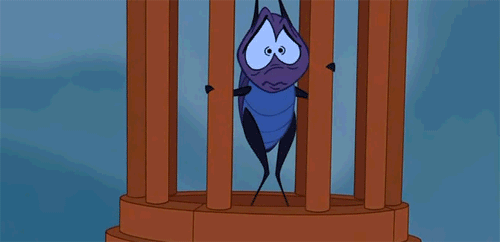Tacos Topped With Crickets: Campus 'Food For Thought' Truck Serves Up Insects To Customers

Eating creepy-crawlers seems like the last thing one would want to do, but the reality is that bugs are really good for you. At the University of Connecticut, a campus food truck called Food for Thought is now offering a side of crickets along with tacos either as toppings or simply a snack. The crickets, served in a small plastic container, are 99 cents each.
And while many might find it strange, the school’s dining service officials believe introducing insects into students' diets is a positive step due to the large amount of nutrients they offer.
“Some people do get them as a topping, some get them for the protein, some for the ‘wow factor’ of having these things,” John Smith, the assistant manager of the dining services at the university, told The Daily Campus. “I think people are just surprised we have them.”
Smith estimates that some two to three containers of crickets are sold at the truck every day, according to The Daily Campus. The crickets are provided by Next Millennium Farms, a progressive insect farm that believes producing insects for consumption will lead to a “protein revolution” offering a new sustainable method of living — especially when, in the future, there may be beef shortages due to higher production costs.
Eating insects as a source of protein isn’t new; some researchers have actually touted them as a solid supplement (or even substitute) to your average diet. The act of eating insects is known as entomophagy, and a diet involving insects provides humans with essential nutrients, including vitamins and minerals like calcium, iron, and zinc. They’re high in protein, fiber, and are environmentally friendly as well — which is perhaps why the United Nations encourages the world to eat more insects.
But can they really solve world hunger, as some researchers have claimed? As the population continues to grow and sustainable food options shrink, researchers have turned to other possibilities, like insects, to plan for the future of food consumption. Scientists, food industry experts, and chefs all over the world have experimented with worms, caterpillars, crickets, locusts, and even larvae — all in the hopes of solving some not-so-far-off crisis.
But one recent study out of the University of California, Davis found that if farmers are going to grow healthy crickets, they need to feed them a healthy diet, making them just as expensive to raise as chickens. Thus, making crickets a major source of protein in the future “will depend on capturing regionally scalable organic side-streams of relatively high quality that are not currently being used for livestock production,” the authors note.
Whether or not crickets will become a mainstream means of protein substitution is yet to be seen, but one thing is certain: Humans have been eating them for thousands of years, and they truly are a solid source of nutrition. So next time you’re offered crickets — dried, roasted, or mixed in a plate of pasta — don’t hesitate to give them a try. They're not even nearly as weird as eating shrimp, oysters, or lobster.




























